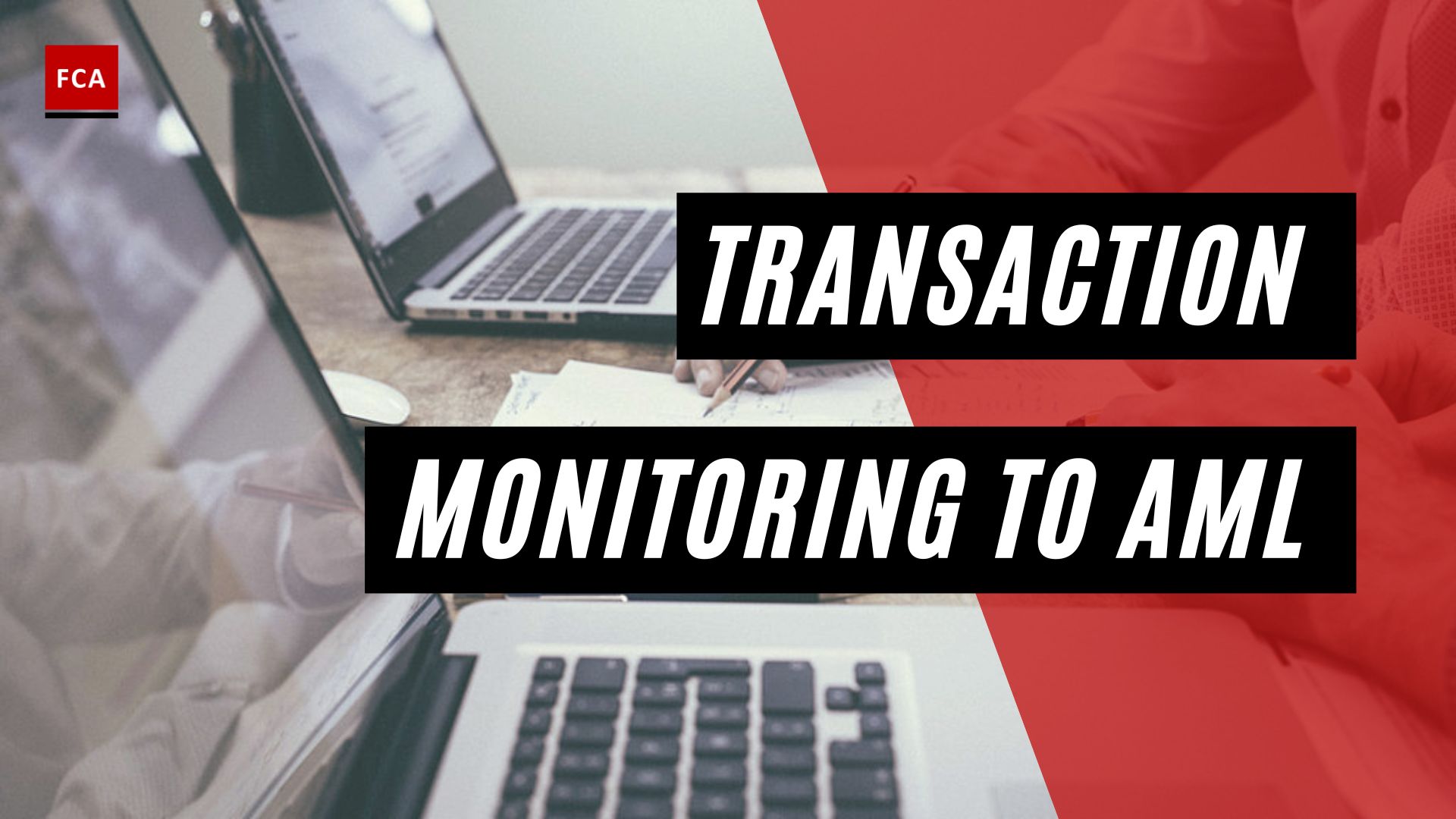Understanding Regulatory Reporting
Regulatory reporting plays a crucial role in ensuring compliance with various laws and regulations in different industries. It involves the submission of accurate and timely information to regulatory authorities, highlighting the financial and operational aspects of an organization. This section will explore the importance of regulatory reporting and the consequences of non-compliance.
Importance of Regulatory Reporting
Regulatory reporting is vital for maintaining transparency, accountability, and trust in the business world. It enables regulatory agencies to monitor and assess the compliance of organizations with applicable laws and regulations. By providing accurate and comprehensive reports, companies demonstrate their commitment to ethical practices and regulatory requirements.
Accurate regulatory reporting helps prevent financial crimes such as money laundering, fraud, and terrorist financing. It enhances the detection and prevention of suspicious activities, ensuring the integrity and stability of the financial system. Furthermore, regulatory reporting helps identify emerging risks and supports regulatory agencies in making informed decisions to protect investors, consumers, and the public.
In addition to regulatory compliance, organizations benefit from regulatory reporting by gaining insights into their own operations. Through the analysis of reported data, companies can identify areas for improvement, make informed business decisions, and assess their overall financial health. This information can be used to drive strategic planning, risk management, and operational efficiency.
Consequences of Non-Compliance
Non-compliance with regulatory reporting requirements can have severe consequences for organizations. Financial penalties for non-compliance can be significant, with some of the largest fines to date reaching millions or even billions of dollars. For example, the largest fine for GDPR breaches amounted to 746 million euros ($847 million). Violations of the Health Insurance Portability and Accountability Act (HIPAA) can result in fines of up to $1.5 million per year for each violation, while executives who knowingly certify non-compliant financial reports related to the Sarbanes-Oxley Act (SOX) requirements might face fines up to $1 million and ten years of imprisonment.
Non-compliance with anti-money laundering (AML) regulations can also have severe consequences. In the United States, violating AML regulations can result in imprisonment for up to 20 years for each violation. Moreover, non-compliance can lead to reputational damage, devaluation of a brand, reduced profits, difficulty in securing investment, increased cost of capital, recruitment challenges, and even total business failure. In some cases, non-compliance may require the closure of operations until the issues are rectified, leading to significant disruptions to productivity and operational capabilities (Diligent).
To mitigate these risks, organizations must prioritize regulatory reporting training and establish robust reporting processes and procedures. By investing in training programs, companies empower compliance professionals to understand and fulfill their reporting obligations effectively, reducing the likelihood of non-compliance and its associated consequences.
Elements of Effective Regulatory Reporting Training
To empower compliance professionals with the necessary skills and knowledge, effective regulatory reporting training programs are essential. These programs should encompass various key elements to ensure comprehensive understanding and proficiency in regulatory reporting requirements. The following elements play a crucial role in successful regulatory reporting training:
Introduction to Regulatory Reporting Requirements
A comprehensive introduction to regulatory reporting requirements is a fundamental component of any training program. This segment familiarizes participants with the regulatory landscape and the importance of accurate and timely reporting. It outlines the regulatory frameworks applicable to their industry, such as AML regulatory compliance, and provides an overview of the reporting guidelines and obligations. By laying this foundation, participants gain a solid understanding of the regulatory landscape and the significance of adherence.
Overview of Consequences of Non-Compliance
Understanding the consequences of non-compliance is vital to reinforce the importance of regulatory reporting. Compliance professionals need to comprehend the potential ramifications that non-compliance can have on an organization. Financial penalties for non-compliance can be substantial, with fines reaching millions of dollars for breaches under regulations like GDPR, HIPAA, and anti-money laundering laws. Additionally, non-compliance can lead to reputational damage, reduced profits, operational limitations, and even legal actions (Diligent). By providing an overview of these consequences, training emphasizes the criticality of accurate reporting and motivates compliance professionals to maintain rigorous standards.
Detailed Guidance on Reporting Processes and Procedures
To ensure compliance professionals can effectively fulfill their reporting obligations, training should offer detailed guidance on reporting processes and procedures. This segment covers the practical aspects of regulatory reporting, including data collection, formatting, and submission protocols. It should provide step-by-step instructions on how to compile accurate reports while adhering to regulatory guidelines. Training may also involve case studies and workshops to facilitate hands-on learning and practical application of reporting procedures. By equipping professionals with in-depth knowledge of reporting processes, the training enables them to navigate the complexities of regulatory reporting with confidence.
By incorporating these elements into regulatory reporting training, organizations can empower their compliance professionals to effectively fulfill their reporting obligations. It is important to emphasize regular refresher training to keep professionals up to date with evolving regulatory changes and engaging training methods that cater to different learning styles and preferences (New York Fed). Utilizing a variety of training formats, such as classroom-based sessions, e-learning modules, workshops, and seminars, ensures maximum knowledge transfer and comprehension of regulatory reporting requirements (New York Fed). With effective training in place, compliance professionals can confidently navigate the regulatory landscape and fulfill their reporting obligations while mitigating the risks associated with non-compliance.
Best Practices for Regulatory Reporting Training
To ensure compliance professionals are well-prepared to meet the regulatory reporting requirements of their respective industries, it is essential to implement effective training programs. Here are some best practices to consider when designing regulatory reporting training:
Regular Refresher Training
Regular refresher training is crucial to ensure that compliance professionals maintain their knowledge of regulatory reporting requirements and procedures. Given the dynamic nature of regulatory changes and updates, continuous training helps keep employees up to date on the latest guidelines and ensures consistent compliance. By providing periodic training sessions, organizations can reinforce key concepts, address any emerging challenges, and ensure that compliance professionals are equipped to carry out their reporting obligations effectively.
Engaging Training Methods
Engaging training methods can significantly enhance the effectiveness of regulatory reporting training. Incorporating interactive elements, such as case studies, workshops, and interactive sessions, promotes active learning, improves retention of information, and increases participant engagement. By creating a dynamic learning environment, compliance professionals can gain practical insights into real-world scenarios, fostering a better understanding of regulatory reporting requirements and their application in practice.
Utilizing a Variety of Training Formats
To accommodate different learning styles and preferences, compliance teams should utilize a variety of training formats. This includes classroom-based training, e-learning modules, workshops, and seminars. By offering diverse training options, organizations can cater to the individual needs of their compliance professionals, ensuring maximum knowledge transfer and comprehension of regulatory reporting requirements. Additionally, providing flexibility in training delivery allows participants to access training materials at their own pace, enhancing convenience and accessibility.
It is important to note that the quality of regulatory reporting training programs depends on various factors, including the expertise of instructors, the relevance of course content, the effectiveness of delivery methods, and the allocated timeframes for training. By considering the unique requirements and learning styles of compliance professionals, organizations can design comprehensive training programs that equip individuals with the necessary knowledge and skills to fulfill their regulatory reporting responsibilities effectively.
Implementing these best practices for regulatory reporting training can enhance compliance professionals’ understanding of reporting requirements and optimize their ability to meet compliance obligations. By investing in robust training programs, organizations can empower their compliance teams to navigate the intricacies of regulatory reporting with confidence and accuracy.
Regulatory Reporting and Compliance Agencies
Regulatory reporting plays a crucial role in ensuring transparency and accountability in the financial industry. Various regulatory agencies oversee and enforce compliance with reporting requirements. Here are three prominent regulatory agencies in the United States responsible for overseeing regulatory reporting and compliance in the financial sector.
Securities and Exchange Commission (SEC)
The Securities and Exchange Commission (SEC) is one of the most influential regulatory agencies in the United States. Its mandate is to protect investors, maintain fair and efficient markets, and facilitate capital formation. The SEC plays a vital role in regulating securities offerings, ensuring compliance with reporting requirements, and enforcing securities laws. Financial institutions are subject to SEC regulations and reporting obligations to provide accurate and timely information to investors and the public.
For more information about the SEC’s regulatory reporting requirements, consult their official website at SEC.gov.
Commodity Futures Trading Commission (CFTC)
The Commodity Futures Trading Commission (CFTC) is responsible for regulating the commodity futures and options markets in the United States. The CFTC aims to promote market integrity, protect market participants against fraud and manipulation, and ensure the fair and transparent operation of commodity markets. Financial institutions engaged in commodity trading activities are subject to CFTC regulations, including reporting requirements related to positions, transactions, and market data.
To learn more about the CFTC’s regulatory reporting requirements, visit their official website at CFTC.gov.
Financial Industry Regulatory Authority (FINRA)
The Financial Industry Regulatory Authority (FINRA) is a self-regulatory organization that oversees and regulates brokerage firms and their registered representatives in the United States. FINRA’s mission is to protect investors and ensure market integrity by enforcing ethical standards and industry regulations. Brokerage firms are required to comply with FINRA rules, which include reporting obligations related to customer accounts, transactions, and regulatory compliance.
For comprehensive information on FINRA’s regulatory reporting requirements, refer to their official website at FINRA.org.
These regulatory agencies, along with other government and industry-specific regulators, establish and enforce regulatory reporting requirements to maintain the integrity of the financial system and protect the interests of consumers and investors. Compliance professionals must stay updated on the evolving regulatory landscape and ensure adherence to reporting obligations set forth by these agencies.
Regulatory Reporting Training in Different Industries
Regulatory reporting training is crucial across various industries to ensure compliance with the ever-evolving regulatory landscape. Let’s explore how regulatory reporting training is relevant in the healthcare industry, banking and financial industry, and the Canadian financial industry.
Healthcare Industry
In the healthcare industry, compliance with regulatory reporting requirements is of utmost importance. Professionals in this field must navigate regulations based on HIPAA standards (Health Insurance Portability and Accountability Act of 1996) and guidelines set by the FDA for pharmaceutical and medical device manufacturing industries (eLeaP). Regulatory reporting training equips healthcare professionals with the knowledge and skills to accurately report data, maintain patient privacy, and ensure compliance with regulatory requirements.
Banking and Financial Industry
The banking and financial industries face stringent regulatory requirements, particularly after the Great Recession. Compliance professionals in these industries must stay abreast of the ever-changing regulations and compliance standards. Regulatory reporting training plays a crucial role in educating professionals about reporting obligations, risk management, and compliance frameworks (eLeaP). By providing training on regulatory reporting, financial institutions can reduce the risk of non-compliance and maintain the integrity of their reporting practices.
Canadian Financial Industry
In Canada, regulatory reporting training is essential for finance professionals to ensure compliance with various regulatory requirements and reporting standards. The Investment Industry Regulatory Organization of Canada (IIROC) mandates regulatory reporting training as part of the continuing education requirements for individuals working in the securities industry. This training helps professionals understand the specific regulatory reporting obligations and guidelines set by IIROC (Indeed).
Furthermore, the Chartered Professional Accountants of Canada (CPA Canada) offers a range of courses related to regulatory reporting. These courses cover topics such as financial reporting, risk management, and internal controls, which are beneficial for professionals seeking regulatory reporting training (Indeed).
By providing comprehensive regulatory reporting training, the Canadian financial industry ensures that finance professionals can effectively navigate the reporting requirements and standards set by regulatory bodies like IIROC and CPA Canada.
Regulatory reporting training is essential across industries to promote compliance, mitigate risks, and uphold the integrity of reporting practices. By equipping professionals with the necessary knowledge and skills, organizations can ensure accurate and timely reporting, fostering a culture of compliance and accountability.
Specialized Training Programs for Regulatory Reporting
Professionals working in compliance, risk management, anti-money laundering, and anti-financial crime can benefit from specialized training programs that focus on regulatory reporting. These programs provide in-depth knowledge and skills necessary to navigate the complex regulatory landscape and ensure compliance with regulatory reporting requirements. Two notable programs in this field are the Osgoode Certificate in Regulatory Compliance and Legal Risk Management and other financial certifications and training programs.
Osgoode Certificate in Regulatory Compliance and Legal Risk Management
The Osgoode Certificate in Regulatory Compliance and Legal Risk Management for Financial Institutions is a comprehensive training program designed to equip professionals with the necessary skills and knowledge to excel in regulatory compliance and legal risk management. This program, offered by Osgoode Professional Development, provides participants with a deep understanding of regulatory requirements and strategies to ensure compliance.
The program covers essential topics such as regulatory reporting, creating a robust compliance program, managing conflicts of interest, and understanding regulatory enforcement actions. Participants gain practical skills and strategies to navigate the complex regulatory landscape, ensure compliance with regulations, and mitigate legal risks.
Designed for professionals working in financial institutions, including compliance officers, legal counsel, risk managers, and other professionals involved in regulatory compliance and legal risk management, this program offers a valuable opportunity to enhance expertise in regulatory compliance, legal risk management, and regulatory reporting.
Other Financial Certifications and Training Programs
In addition to the Osgoode Certificate program, there are various other financial certifications and training programs available that focus on regulatory reporting. These programs cater to professionals in different industries and provide specialized knowledge and skills specific to their respective sectors.
For example, professionals in the healthcare industry can benefit from certifications and training programs that cover regulatory reporting requirements related to healthcare compliance and AML regulatory compliance. Similarly, individuals working in the banking and financial industry can explore certifications and training programs that delve into the intricacies of regulatory reporting and compliance obligations in this sector.
In Canada, professionals in the financial industry can seek out specialized training programs that focus on the specific regulatory reporting requirements of Canadian financial institutions. These programs provide insights into the unique regulatory landscape and reporting frameworks relevant to the Canadian context.
By participating in these specialized training programs, professionals can enhance their knowledge, skills, and understanding of regulatory reporting, enabling them to better fulfill their compliance responsibilities and contribute to the success of their organizations.
It’s important for professionals to research and identify the most suitable training programs based on their industry, job role, and specific regulatory reporting requirements. Engaging in continuous professional development through these programs ensures that compliance professionals stay up-to-date with the latest regulatory developments and best practices in the field.
Challenges and Considerations in Regulatory Reporting Training
When it comes to regulatory reporting training, there are several challenges and considerations that organizations must address to ensure the effectiveness of their training programs. These challenges include resource allocation and budgeting, learning styles and preferences, and the need for continuous review and updates.
Resource Allocation and Budgeting
Developing and implementing comprehensive regulatory reporting training programs requires careful resource allocation and budgeting. Financial institutions need to allocate sufficient resources, including time, personnel, and financial support, to adequately train their employees on the intricacies of regulatory reporting requirements.
To ensure the success of training programs, organizations must invest in qualified instructors, relevant course content, and appropriate delivery methods. Adequate timeframes should be provided to allow participants to fully comprehend and internalize regulatory reporting responsibilities. By dedicating the necessary resources, organizations can empower compliance professionals with the knowledge and skills needed to fulfill their reporting obligations effectively.
Learning Styles and Preferences
To develop effective regulatory reporting training programs, organizations must consider the different learning styles and preferences of adult learners. Individuals have varying methods of learning, with some benefiting from reading, listening, or hands-on practice. By understanding these differences, training providers can create customized programs that cater to various learning styles, enhancing the overall effectiveness of the training.
It is crucial to incorporate interactive elements, such as case studies, simulations, and real-life scenarios, to engage participants and provide practical experience in applying regulatory reporting requirements. These hands-on activities help reinforce learning and enable participants to test their understanding of the concepts covered in the training program. By accommodating different learning styles, organizations can maximize the impact of their regulatory reporting training initiatives.
Continuous Review and Updates
In a rapidly evolving regulatory environment, financial institutions must periodically review and update their regulatory reporting training programs. Staying abreast of new rules, guidelines, and reporting requirements is essential to maintaining compliance and the effectiveness of training programs.
Continuous review ensures that training programs reflect the most current regulatory reporting requirements and changes. By regularly updating training content, organizations can ensure that compliance professionals are equipped with the latest knowledge and skills necessary to fulfill their reporting obligations. This proactive approach helps mitigate the risk of non-compliance and enhances the overall quality of regulatory reporting training.
By addressing these challenges and considerations, organizations can develop and implement regulatory reporting training programs that empower compliance professionals with the necessary skills and knowledge to meet reporting obligations effectively. Regularly reviewing and updating training programs, considering diverse learning styles, and allocating adequate resources are essential steps towards building a strong foundation for regulatory reporting compliance.
Evaluating the Effectiveness of Regulatory Reporting Training
To ensure the effectiveness of regulatory reporting training programs, organizations need to implement evaluation measures that assess the impact and outcomes of the training. This section will explore three key aspects of evaluating the effectiveness of regulatory reporting training: metrics for training success, collecting participant feedback, and assessing the application of learning.
Metrics for Training Success
Measuring the success of regulatory reporting training programs requires the establishment of relevant metrics that align with the learning objectives and desired outcomes. These metrics provide a quantitative assessment of the effectiveness of the training. Some common metrics used to evaluate the success of regulatory reporting training include:
- Completion Rates: Tracking the percentage of participants who successfully complete the training program provides insight into the engagement and commitment of employees.
- Assessment Scores: Conducting assessments before and after the training can measure the knowledge gained and identify areas that require further attention.
- Compliance Rates: Monitoring compliance rates post-training helps determine if employees are accurately implementing the regulatory reporting requirements.
- Error Rates: Tracking the number of errors or discrepancies in regulatory reports can indicate the effectiveness of the training program in reducing mistakes.
By analyzing these metrics, organizations can identify areas of improvement and make necessary adjustments to enhance the quality of their regulatory reporting training programs.
Collecting Participant Feedback
Collecting feedback from participants is crucial in evaluating the effectiveness of regulatory reporting training programs. This feedback provides valuable insights into the learners’ perception of the training content, delivery methods, and overall training experience. Feedback can be gathered through various methods, such as surveys, focus groups, or one-on-one interviews.
Some key areas to explore when collecting participant feedback include:
- Relevance and Clarity: Assessing if the training content was relevant to participants’ roles and responsibilities and if it was presented in a clear and understandable manner.
- Engagement and Interactivity: Determining whether the training methods used were engaging, interactive, and encouraged active participation.
- Effectiveness of Instructors: Evaluating the effectiveness of instructors in delivering the training material, answering questions, and addressing concerns.
- Training Materials and Resources: Gathering feedback on the quality and usefulness of training materials, including job aids, reference guides, and online resources.
By listening to participant feedback, organizations can gain valuable insights on how to improve the design and delivery of their regulatory reporting training programs.
Assessing Application of Learning
Assessing the application of learning is a critical step in evaluating the effectiveness of regulatory reporting training. It involves determining whether participants can effectively apply what they have learned to their day-to-day responsibilities. This assessment can be conducted through various methods, such as:
- Observation and Performance Monitoring: Observing participants in real or simulated work environments to assess their ability to apply the regulatory reporting requirements.
- Case Studies and Scenarios: Presenting participants with realistic case studies or scenarios to evaluate their decision-making skills and application of regulatory reporting knowledge.
- Workplace Projects: Assigning participants projects that require them to demonstrate their understanding of regulatory reporting requirements and produce accurate reports.
By assessing the application of learning, organizations can ensure that their regulatory reporting training programs translate into improved compliance and accurate reporting in real-world situations.
Evaluating the effectiveness of regulatory reporting training is crucial for organizations to continually enhance the quality and impact of their training programs. By establishing metrics for success, collecting participant feedback, and assessing the application of learning, organizations can identify areas for improvement and make necessary adjustments to empower compliance professionals in meeting regulatory reporting requirements.








